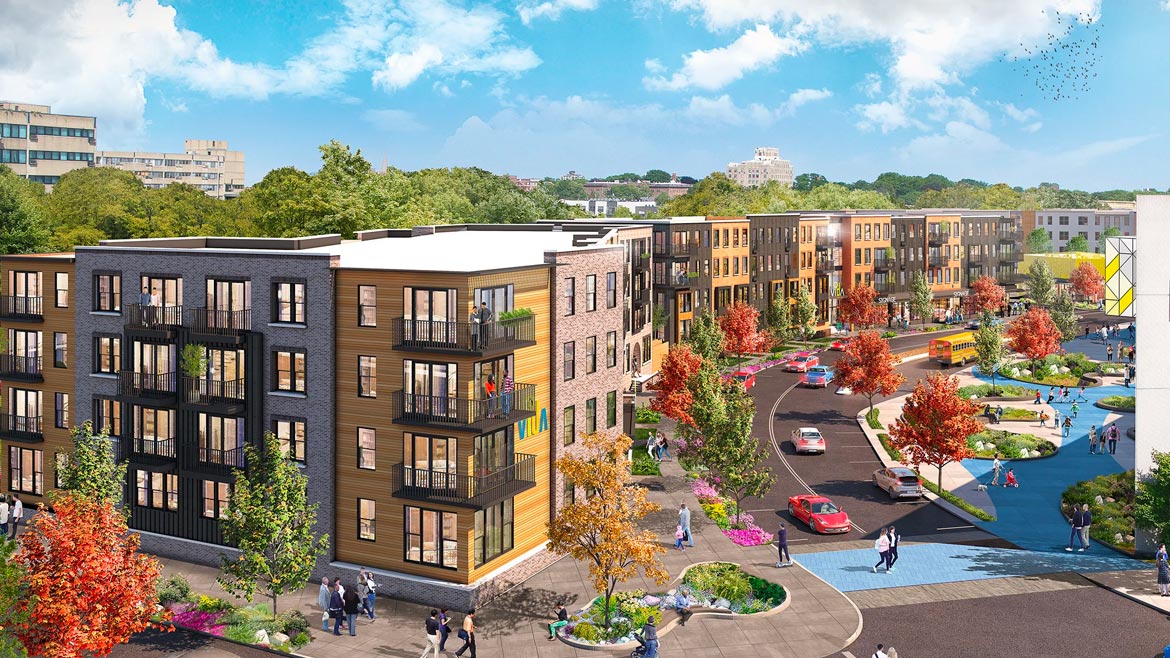The Rise, Value, and Transformational Importance of Mixed-Use Developments in London and the UK’s Major Cities
London’s cityscape—and those of Manchester, Birmingham, and other UK giants—have been reshaped in recent years. Mixed-use developments are rapidly evolving from urban experiments to preferred solutions for space-strapped cities and investors looking to futureproof their portfolios. But what exactly makes these projects so special, and why is everyone from first-time buyers to major developers getting involved? Let’s break it down.
What Is a Mixed-Use Development?
In a nutshell, mixed-use developments combine different types of spaces—think homes, offices, shops, cafés, maybe even parks or hotels—all on one site. You might live upstairs, work in the building next door, hit the gym down the hall, and grab coffee at the corner café—no lengthy commute required.
Often, these projects transform unloved or obsolete spots into thriving hubs. Prime examples in London include Battersea Power Station’s transformation into a riverside community, Elephant Park’s vibrant urban blend, and the ongoing evolution of Canary Wharf. Up next? Massive regeneration plans at Euston, Earl’s Court, and Canada Water.

Why the Sudden Boom in Mixed-Use?
1. Space—and Creativity—Are in Short Supply
Central London, Manchester, Leeds, and their peers don’t have endless land to play with. The UK government (and city planners) are under pressure to deliver more homes, create jobs, and reinvigorate high streets—without bulldozing through miles of suburbs. Mixed-use schemes tackle several issues at once: more housing, more workspaces, better community, and smarter use of urban land.
2. Changing Priorities (Thanks, Pandemic!)
According to Knight Frank, recent years have seen a real shift in what people want from city life. Proximity to shopping, easy access to public transport, walkable communities, and the chance to “live local” now top the wish lists of buyers and tenants alike. In fact, 67% of buyers say nearby amenities are a must-have, and over half want to walk to work.
3. Regeneration is the Name of the Game
There’s big government and private sector momentum behind breathing new life into tired or underutilized sites. Nearly 21,000 homes have been delivered in London over the past six years under “permitted development rights,” often as part of innovative mixed-use schemes.

The Value Mixed-Use Brings
Community & Lifestyle Value
Mixed-use developments aren’t just about bricks and mortar. By bringing together residents, businesses, retailers, and visitors, they help build vibrant, connected communities. Shared spaces—parks, plazas, and communal lounges—encourage interaction. Local cafés and shops become both amenities and gathering places, fostering that elusive “neighbourhood feel” everyone’s after.
Example: Battersea Power Station
Once an industrial relic, Battersea is now a thriving destination where people work, live, dine, and play—illustrating how mixed-use can totally reinvent a city district.
Financial Benefits
From an investor’s perspective, the appeal is clear. These projects often deliver:
- Multiple revenue streams (residential rents, commercial leases, retail units, and sometimes hotels)
- Reduced risk (downturn in one sector can be cushioned by strength in another)
- Rising property values, as areas become more attractive and footfall increases
- Greater resilience: The City of London, for example, is seeing a mini-boom as outdated offices convert into hotels and serviced apartments
For buyers, owning a home in a buzzing mixed-use community can mean better amenities, convenient services, and strong long-term prospects for property value growth.
Sustainability—Built In
Mixed-use is also ticking the green boxes. By concentrating living, working, and leisure within walkable areas, there’s less need for car journeys, and more scope for energy-efficient building design and shared infrastructure. Plus, converting or updating existing sites is, in many cases, far eco-friendlier than building entirely new ones.

Mixed-Use and the Great Urban Transformation
These projects are changing the very DNA of cities. Why? Because they tackle so many pain points at once: housing shortages, economic revitalisation, high street decline, and social disconnection.
- For Developers: They present an opportunity to diversify projects and income, reduce vacancy risk, and stand out in a crowded marketplace.
- For Investors: There’s a pivotal window right now, thanks to supportive planning policies and urgent demand for functional spaces.
- For Communities: They mean more dynamic, safer, and livelier environments that reclaim city cores from “business only” ghost towns.
Case Study: Canary Wharf Reimagined
Originally known for its finance-focused skyscrapers, Canary Wharf is rapidly evolving. New phases weave in apartments, shopping, public space, and entertainment. It’s no longer just a 9-to-5 zone but a true “24-hour neighbourhood.”

Challenges: It’s Not All Smooth Sailing
Mixed-use isn’t without headaches:
- Planning and Policy: Regulations can be complex, with different rules for residential, commercial, and leisure use. Sometimes local councils push back or move the goalposts.
- Viability: Older schemes in the early 2000s often struggled with empty units. Success relies on getting the mix right—and making sure there’s solid demand for each use.
- Saturation and Trends: Demand for hotels might fluctuate, for example, and what’s trendy today may need adapting tomorrow. Long-term flexibility is key.
The Future Outlook—and What Buyers Should Know
The appetite for mixed-use is only set to grow. As cities push for more affordable housing, greater densification, and higher-quality lifestyles, these types of projects fit the bill beautifully.
For those considering buying in a mixed-use development at auction:
- Location, Location, Location: Not all mixed-use schemes are equal. Look for proven demand and solid regeneration plans in the area.
- Check the Mix: A well-balanced blend of homes, workspaces, retail, and green space usually points to long-term value.
- Assess Amenities: Access to transport, schools, shops, and parks adds value (and keeps you ahead of market trends).
- Research Developers: Reputable names with experience in mixed-use usually deliver stronger outcomes.
- Understand the Rules: Some developments come with restrictions—read up on lease terms, service charges, and planning consents.
- Embrace the Buzz: Living or investing in a mixed-use community means enjoying the energy of a place that’s truly alive—morning, noon, and night.
Summing Up
Mixed-use developments aren’t just a passing trend—they’re helping UK cities solve big challenges and build more connected, valuable, and sustainable places to live, work, and visit. Whether you’re considering your first purchase or seeking a transformational investment, there’s every reason to explore these projects further.
Curious about mixed-use opportunities or want to see what’s coming up at auction? Get in touch with us at Palace Auctions or browse our latest listings. The future city is mixed—and it’s being built right now.
…


